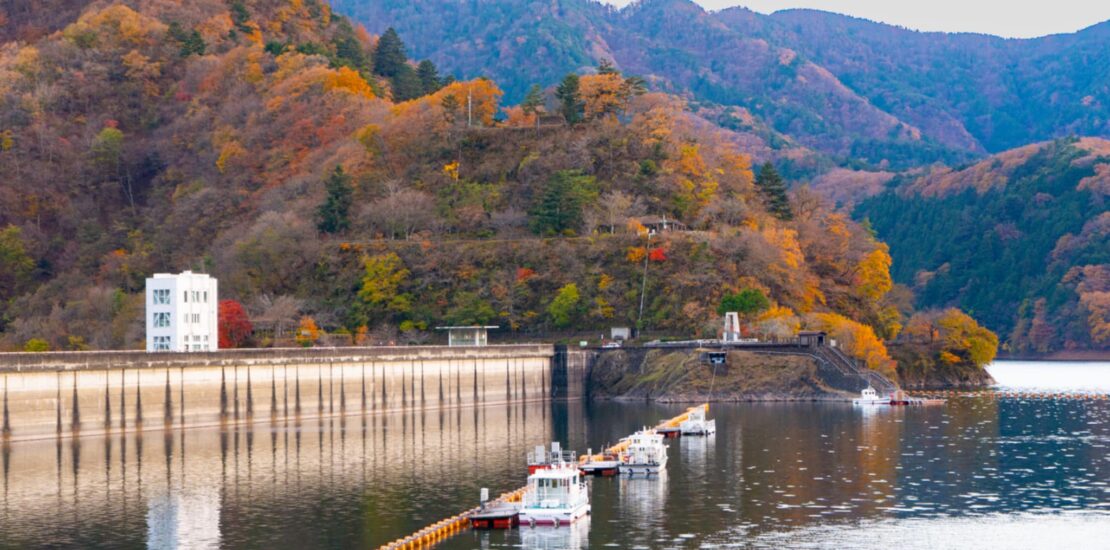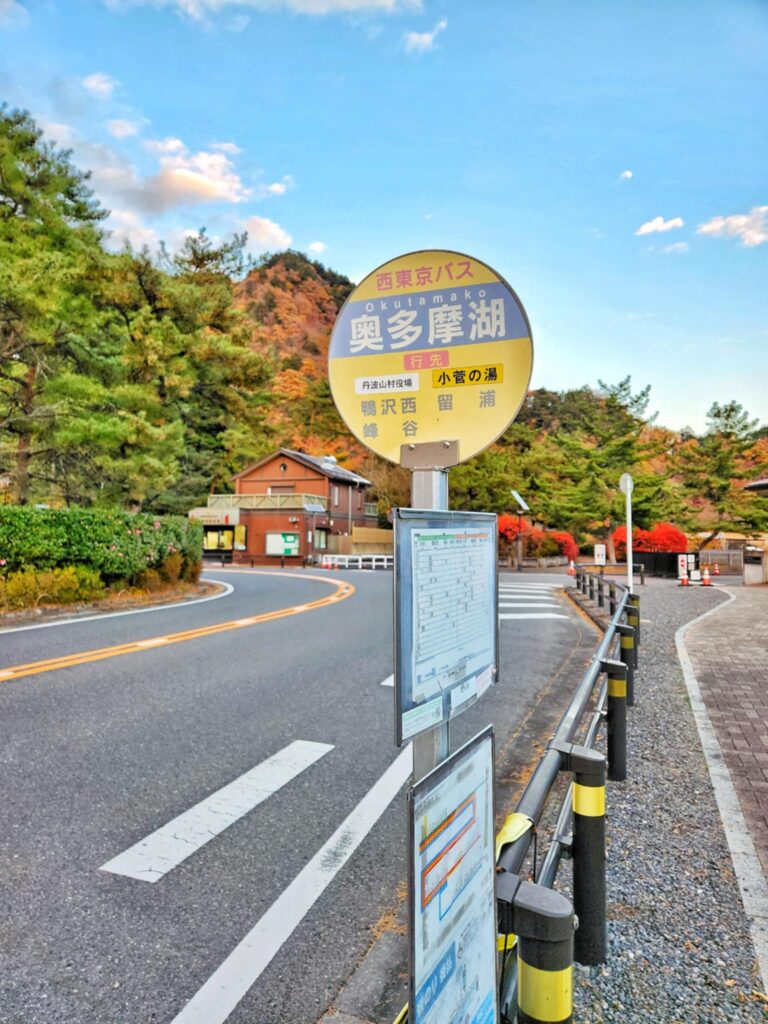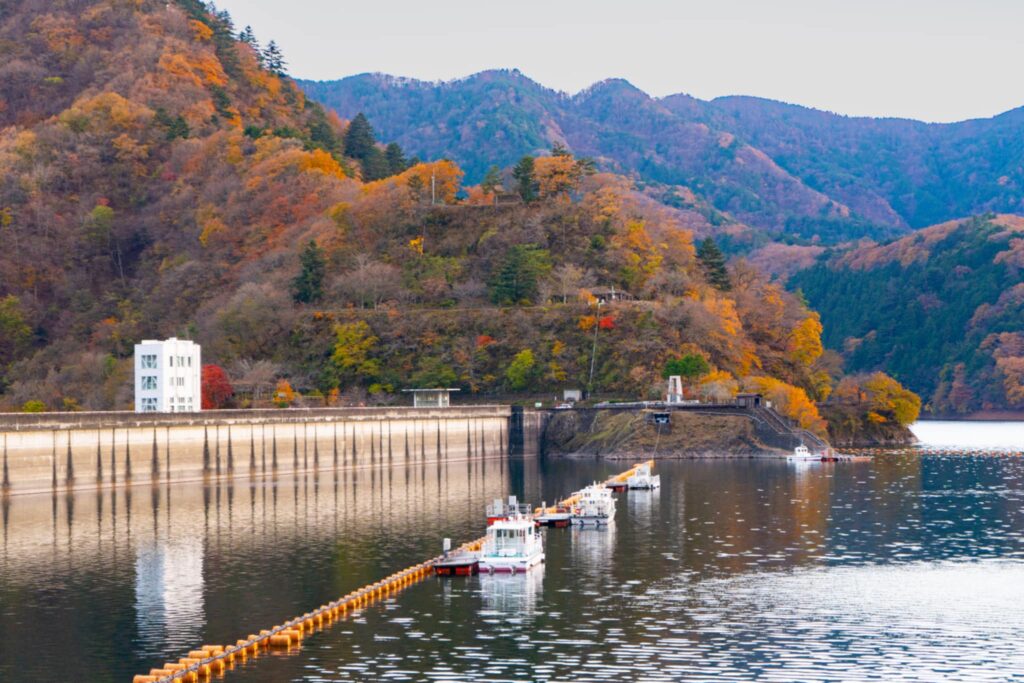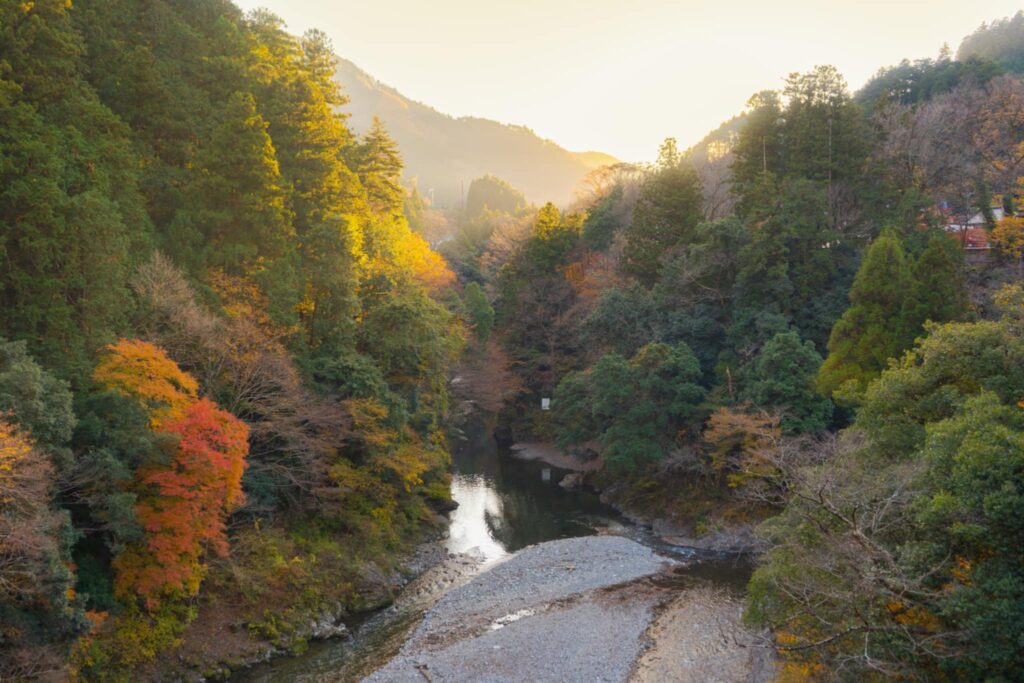Autumn has finally arrived, and what better way to de-stress than leaving the bustling city for a refreshing nature retreat. Join me as we discover Okutama, a scenic town in western Tokyo brimming with outdoor adventures and tranquil escapes.

Uncovering the Charms of Okutama
Okutama is one of the municipalities in western Tama, a region in Tokyo celebrated for its abundant natural landscapes that stand in stark contrast to the capital’s urban setting. The area is especially popular for its gorgeous seasonal scenery and attractions, including gardens, museums, and historical shrines. Okutama is also a great destination for thrill seekers as it offers various outdoor activities like hiking, kayaking, camping, and canyoning.
How to Get There
Despite its remote location, Okutama’s proximity to central Tokyo makes it a great option for a day trip or an overnight stay. From Tokyo Station, take the JR Chuo Rapid Line to Ome Station, then transfer to Ome Line bound for Okutama Station. Taking this line is a convenient way to explore the area, as the train stops at other key stations like Mitake, Hatonosu, and Shiromaru.
Where to Go and What to Do in Okutama
① Admire the autumn hues of Hatonosu Valley

Just a 5-minute walk from Hatonosu Station, Hatonosu Valley is a beautiful spot you shouldn’t miss. It’s gorgeous year-round, especially in autumn—when the trees turn into brilliant shades of red, yellow, and orange. Strolling along the trail, you’ll hear the gentle flow of water and chirping birds, a harmony that will instantly lift up your mood. At the end of the path, a suspension bridge awaits, surrounded by colorful autumn foliage. As you cross it, marvel at the picturesque view of the Tama River winding between the mountains. Walk further down and you’ll find a cluster of riverside rocks—an inviting place to sit, relax, and take in the wonderful gifts of nature. Once you’ve worked up an appetite, stop by the nearby café, Gallery Poppo, and treat yourself to tea and cake, all while enjoying a bird’s-eye view of the valley.
② Spice up your palate with a dash of wasabi

Unbeknownst to many, Okutama is renowned for its high-quality wasabi, thanks to its unique natural environment that provides cool, mineral-rich mountain waters and temperate conditions. The balance of minerals in the water imparts a desirable flavor, while the mild temperatures contribute to the plant’s quality and signature spicy kick. As a result, Okutama wasabi is prized as a top-class ingredient, a valuable regional specialty, and a sought-after souvenir. The quickest way to get a taste of this condiment is to head to Tokyo Wasabi’s food truck, located just outside the Okutama Station. Here, you can order wasabi-don, a meal consisting of a generous serving of Koshihikari rice topped with grilled pork, bonito flakes, and freshly-grated wasabi that lends a pleasantly cool spiciness. To cap off your meal, try the wasabi-flavored cookies for a refreshing, sweet treat.
If you’re after a deeper experience, you can join a wasabi tour (also offered by Tokyo Wasabi), where you can visit wasabi farms, sample fresh wasabi straight from its source, and gain insights about its cultivation. For more information check their website at https://tokyowasabi.com/wasabi-experience-en/
③ Go camping at Hikawa Gorge

A quick 3-minute walk from Okutama Station, Hikawa Gorge is a scenic spot where you can experience the beauty of nature with its towering trees, rock formations, and clear streams. The area is popular with both tourists and locals as it offers various outdoor activities like camping and barbecuing. There’s a camping area called Hikawa Campsite where you can chill and relax, all while surrounded by lush greenery. You are free to pitch your tent, enjoy barbecue, and make a bonfire. If you prefer a more comfortable stay, you can rent a lodge that includes a bathroom, toilet, and bedding. Meals are also available for an additional fee.
④ Paddle through Lake Shiromaru
Looking for an activity that combines relaxation and a light arm workout? Why not try kayaking? Glide across the calm, emerald waters of Lake Shiromaru and take in the breathtaking scenery around you. The gentle breeze and the rhythmic paddle strokes create a perfect mix of serenity and motion.
If you’re a beginner and unsure how to start, you can book a tour with Crusoe Rafting. They provide all the necessary gear you need like helmet, life jacket, wetsuit, and water shoes. An expert kayaker will guide you through the basics, so you can navigate your kayak smoothly.
⑤ Explore Lake Okutama

Another hidden oasis is Lake Okutama, a man-made reservoir created by the Ogouchi dam—a vital water source for the city and a popular nature destination. The lake’s deep blue waters are mesmerizing and provide a striking contrast to the seasonal colors of the landscape. Another unique feature of this spot is its two floating bridges, one of which is the Mugiyama Floating Bridge that guides your gaze towards the distant mountains blanketed with vibrant fall shades.
Take a slow meander across the bridge, or, if you want to explore the area further, head to Yama no Furusato Mura, a former village turned into a visitor center. Here, you’ll find traditional craft workshops, restaurants, and even a campsite. From the village, you can access a narrow trail leading to the summit of Mt. Mito, one of the three Okutama mountains.
⑥ Hike Mt. Mitake
Located within the Chichibu Tama Kai National Park, Mt. Mitake is the perfect place to immerse yourself in verdant landscapes and lush greenery. Rising 3,048 feet, it offers sweeping views that stretch all the way to Tokyo. At its summit sits the historic Musashi-Mitake Shrine, a sacred site with a history spanning over 2,000 years—a must-visit for its cultural significance.
To reach the top, you can either hike up the mountain on foot or ride the Mitake Tozan Railway cable car from Takimoto Station.
⑦ Try canyoning
If you’re looking for an exhilarating outdoor activity, why not try canyoning? Canyoning is an adrenaline-filled activity that takes place in rugged, natural landscapes, such as deep canyons and gorges. Participants follow the course of the water and descend the canyon, often starting at a high point and working their way down to the lowest point of interest. It requires considerable stamina, as it involves techniques like rappelling, jumping into pools, sliding down natural rock slides, climbing, and hiking. Since it’s a high-endurance activity, tours are often led by professional guides to ensure safety and to make the experience accessible for beginners. Popular operators like Canyons and Grandex offer courses ranging from beginner-friendly routes to advanced canyon descents with rope work and higher jumps.
Stay tuned for more exciting content like this! Follow us on our social media platforms and check out our blog regularly to stay updated on the latest news, trends, and insider stories from Japan. Don’t miss out on future updates — sign up for our newsletter for exclusive content delivered straight to your inbox!
Related Articles
Warning: Undefined array key "sfsi_threadsIcon_order" in /home/veremosglobal/tokyoroomfinder.com/public_html/blog/wp-content/plugins/ultimate-social-media-icons/libs/controllers/sfsi_frontpopUp.php on line 165
Warning: Undefined array key "sfsi_blueskyIcon_order" in /home/veremosglobal/tokyoroomfinder.com/public_html/blog/wp-content/plugins/ultimate-social-media-icons/libs/controllers/sfsi_frontpopUp.php on line 170
Warning: Undefined array key "sfsi_bluesky_display" in /home/veremosglobal/tokyoroomfinder.com/public_html/blog/wp-content/plugins/ultimate-social-media-icons/libs/controllers/sfsi_frontpopUp.php on line 266



